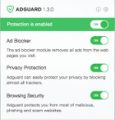What is TypicalInput
TypicalInput is supposed to be an app that will improve the browsing experience, but it is adware. Adware software is something that you should be aware of even if you use Safari, Google Chrome or other modern web-browser. This is the name given to applications that have been developed to display undesired ads and popup commercials onto your web browser screen. The reason for adware’s existence is to earn profit for its developer.
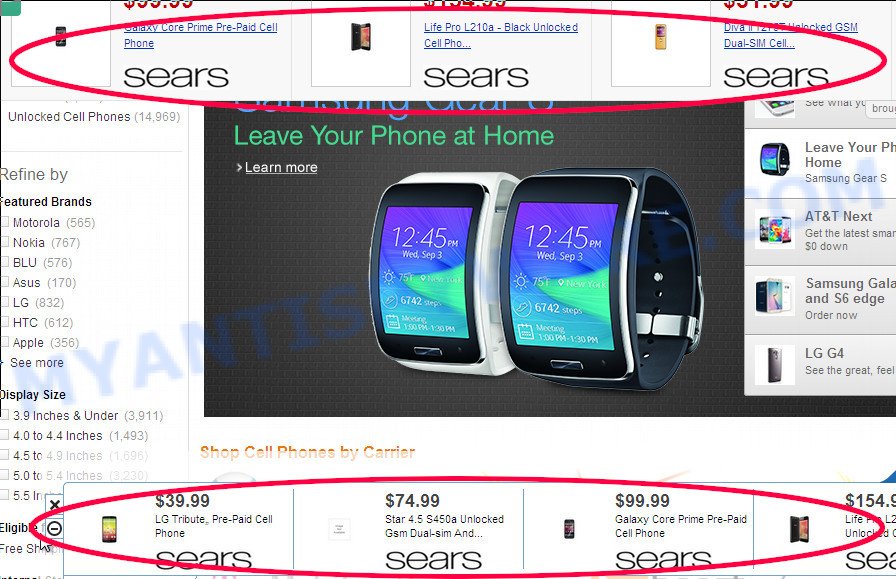
Unwanted ads
The worst is, adware software can install a component which enables its author to track which websites you visit, which products you look at upon those pages. They are then able to choose the type of ads they show you. So, if you had adware software on your MAC, there is a good chance you have another that is gathering and sharing your confidential data with third parties, without your say-so.
How does TypicalInput get on your computer
Adware usually gets on your MAC system together with another program in the same installer. The risk of this is especially high for the various free software downloaded from the Net. The developers of the applications are hoping that users will use the quick installation mode, that is simply to press the Next button, without paying attention to the information on the screen and don’t carefully considering every step of the install procedure. Thus, adware can infiltrate your MAC OS without your knowledge. Therefore, it is very important to read everything that the program says during setup, including the ‘Terms of Use’ and ‘Software license’. Use only the Manual, Custom or Advanced install method. This method will help you to disable all optional and unwanted programs and components.
Threat Summary
| Name | TypicalInput, TypicalInput 1.0 app |
| Type | adware, potentially unwanted program (PUP), popups, pop-up virus, pop-up advertisements |
| Symptoms |
|
| Removal | TypicalInput removal guide |
How to Remove TypicalInput adware (removal steps)
When the adware software gets installed on your MAC OS without your knowledge, it is not easy to remove. Most commonly, there is no Uninstall program that simply delete the TypicalInput adware software from your Mac. So, we recommend using well-proven free specialized utility such as MalwareBytes Anti Malware. But the best method to remove TypicalInput adware will be to perform several manual steps, after that additionally use antimalware tools.
To remove TypicalInput, complete the steps below:
- Remove profiles created by TypicalInput
- Uninstall TypicalInput associated software by using the Finder
- Remove TypicalInput related files and folders
- Scan your Mac with MalwareBytes
- Remove TypicalInput from Safari, Chrome, Firefox
- How to stay safe online
- To sum up
Remove profiles created by TypicalInput
TypicalInput can make changes to the Mac system such as malicious changes to browser settings, and the addition of malicious system profiles. You need to check the system preferences, find and remove malicious profiles and ensure your settings are as you expect.
Click Apple menu ( ![]() ) > System Preferences.
) > System Preferences.
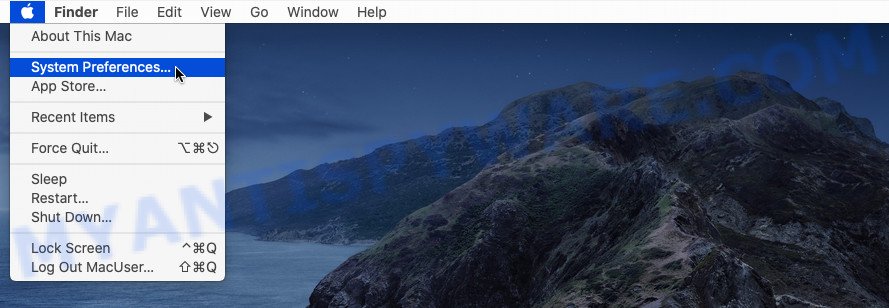
In System Preferences, select Profiles. if there is no Profiles in the list of preferences, that means there are no profiles installed on the Mac device. If there is Profiles in the list, then click on it, then select a profile related to TypicalInput.
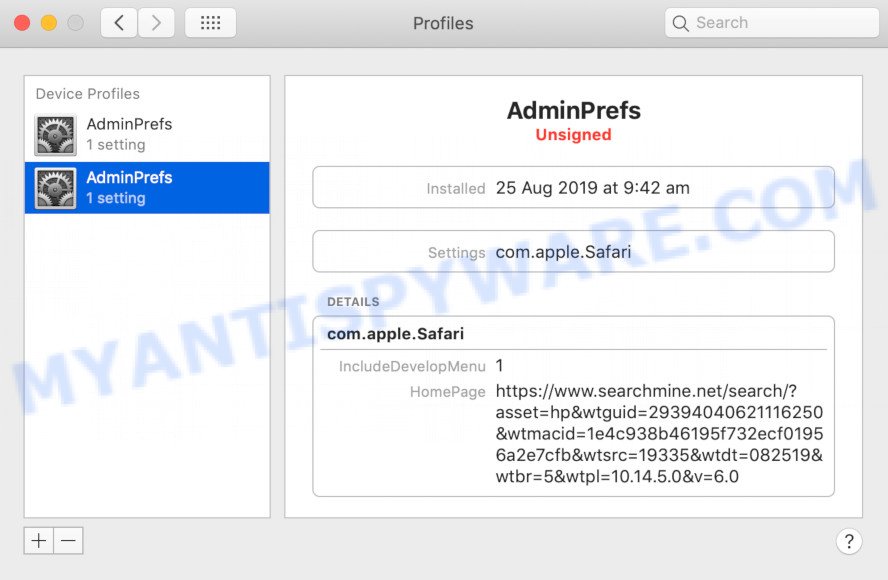
To delete a malicious profile, click on the minus button ( – ) located at the bottom-left of the Profiles screen.
Uninstall TypicalInput associated software by using the Finder
Check out the Finder (Applications section) to see all installed applications. If you see any unknown and dubious applications, they are the ones you need to uninstall.
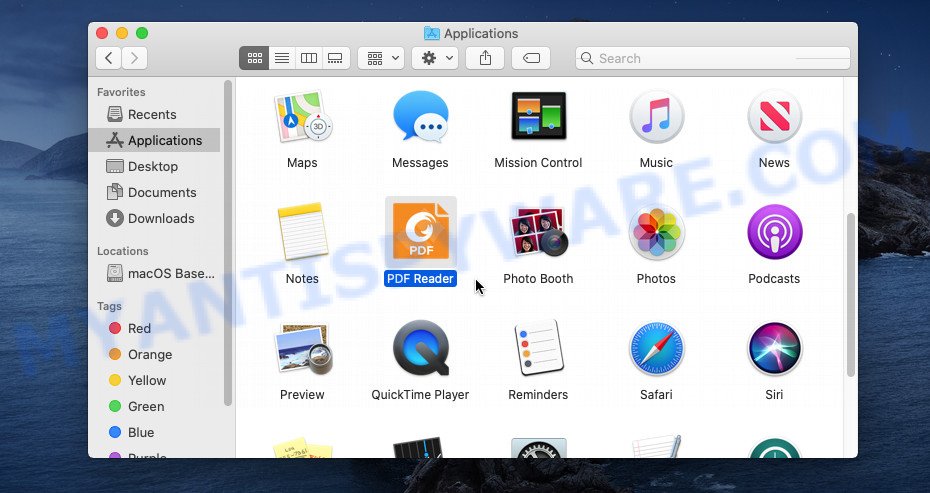
- Open the Finder.
- Click “Applications”.
- It will show a list of all apps installed on the machine.
- Scroll through the all list, and delete suspicious and unknown software. Pay maximum attention to the application you installed last.
- Drag the suspicious program from the Applications folder to the Trash.
- Empty Trash.
Remove TypicalInput related files and folders
Now you need to try to find TypicalInput related files and folders, and then delete them manually. You need to look for these files in certain directories. To quickly open them, we recommend using the “Go to Folder…” command.
Click on the Finder icon. From the menu bar, select Go and click “Go to Folder…”. As a result, a small window opens that allows you to quickly open a specific directory.

Check for TypicalInput generated files in the /Library/LaunchAgents folder

In the “Go to Folder…” window, type the following text and press Go:
/Library/LaunchAgents
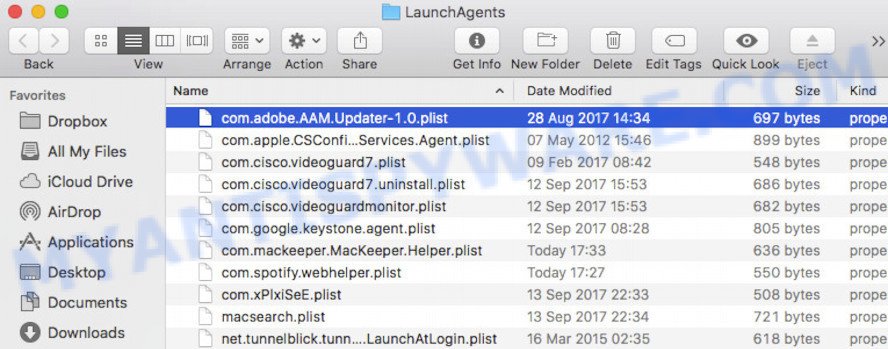
This will open the contents of the “/Library/LaunchAgents” folder. Look carefully at it and pay special attention to recently created files, as well as files that have a suspicious name. Move all suspicious files to the Trash. A few examples of files: installapp.plist, macsearch.plist, TypicalInput.plist, com.machelper.plist and search.plist. Most often, PUPs, browser hijackers and adware software create several files with similar names.
Check for TypicalInput generated files in the /Library/Application Support folder

In the “Go to Folder…” window, type the following text and press Go:
/Library/Application Support
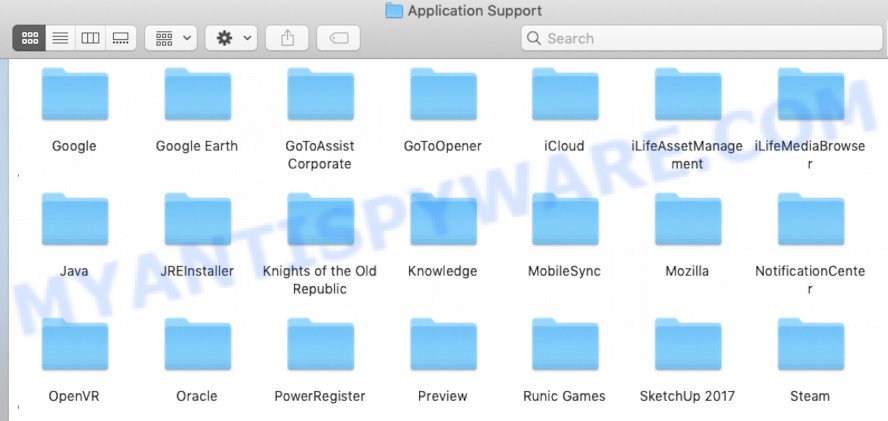
This will open the contents of the “Application Support” folder. Look carefully at its contents, pay special attention to recently added/changed folder. Move all suspicious folders to the Trash.
Check for TypicalInput generated files in the “~/Library/LaunchAgents” folder

In the “Go to Folder…” window, type the following text and press Go:
~/Library/LaunchAgents

Proceed in the same way as with the “/Library/LaunchAgents” and “/Library/Application Support” folders. Look for suspicious and recently added files. Move all suspicious files to the Trash.
Check for TypicalInput generated files in the /Library/LaunchDaemons folder
In the “Go to Folder…” window, type the following text and press Go:
/Library/LaunchDaemons

Carefully browse the entire list of files and pay special attention to recently created files, as well as files that have a suspicious name. Move all suspicious files to the Trash. A few examples of files to be deleted: com.machelper.plist, com.TypicalInput.plist, com.installapp.plist, com.search.plist and com.macsearch.plist. In most cases, adware, browser hijackers and potentially unwanted programs create several files with similar names.
Scan your Mac with MalwareBytes
We suggest using MalwareBytes Anti Malware (MBAM) to scan the Mac for potentially unwanted programs, adware software and browser hijackers. This free utility is an advanced malicious software removal program designed by (c) Malwarebytes lab. This program uses the world’s most popular anti-malware technology. It’s able to help you remove browser hijackers and other security threats from your Mac device for free.
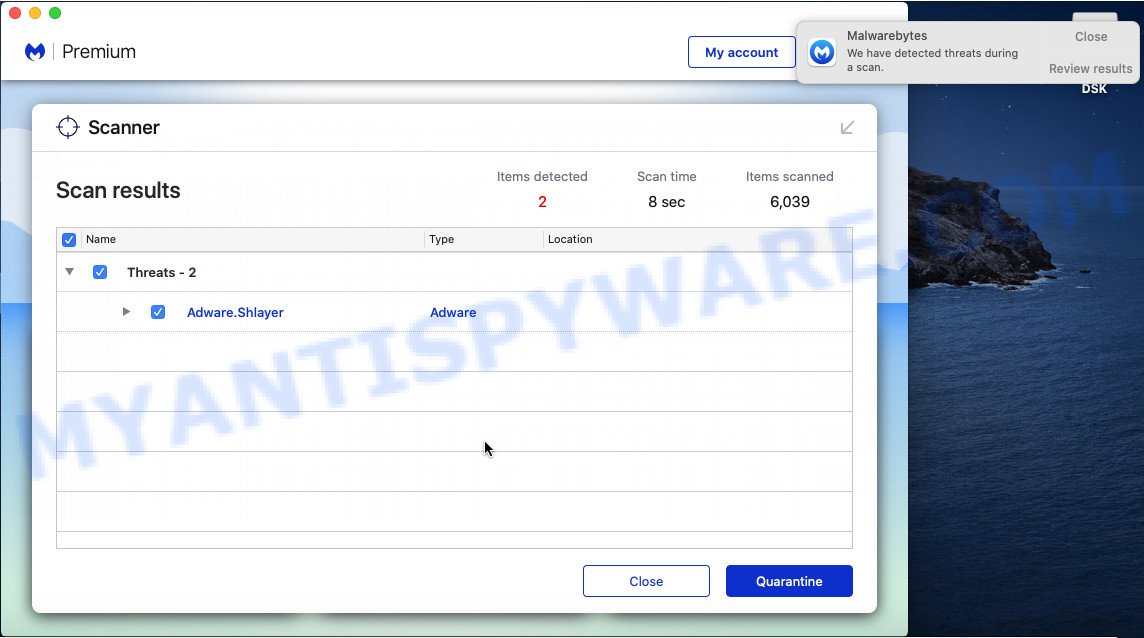
- Click the link below to download the latest version of MalwareBytes Free for Mac OS.
Malwarebytes Anti-malware (Mac)
21018 downloads
Author: Malwarebytes
Category: Security tools
Update: September 10, 2020
- Once downloading is complete, close all programs and windows on your MAC OS. Open a file location. Run the downloaded file and follow the prompts.
- Click the “Scan” button to perform a system scan with this tool for the TypicalInput adware. This process may take some time, so please be patient.
- When the system scan is complete, you’ll be displayed the list of all found threats on your machine. In order to remove all items, simply press “Quarantine”.
Remove TypicalInput from Safari, Chrome, Firefox
Annoying TypicalInput adware software or other symptoms of adware in your web browser is a good reason to locate and remove harmful plugins. This is an easy way to restore browsers settings and not lose any important information.
You can also try to get rid of TypicalInput by reset Google Chrome settings. |
If you are still experiencing issues with TypicalInput adware removal, you need to reset Mozilla Firefox browser. |
|
How to stay safe online
The AdGuard is a very good ad blocking program for the Safari, Chrome and Firefox, with active user support. It does a great job by removing certain types of undesired advertisements, popunders, popups, annoying new tabs, and even full page advertisements and web-site overlay layers. Of course, the AdGuard can stop harmful web-sites automatically or by using a custom filter rule.
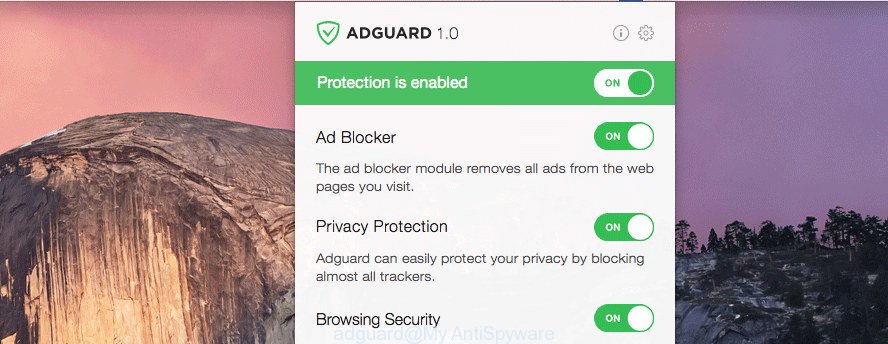
- Click the link below to download AdGuard.
AdGuard for Mac download
3779 downloads
Author: © Adguard
Category: Security tools
Update: January 17, 2018
- Once downloading is done, run the downloaded file. You will see the “Setup Wizard” program window. Follow the prompts.
- When the setup is complete, click “Skip” to close the setup program and use the default settings, or click “Get Started” to see an quick tutorial which will help you get to know AdGuard better.
- In most cases, the default settings are enough and you do not need to change anything. Each time, when you run your MAC, AdGuard will start automatically and stop annoying advertisements, block harmful and misleading webpages.
To sum up
After completing the steps above, your MAC system should be clean from the TypicalInput adware and other malware. The Safari, Mozilla Firefox and Chrome will no longer redirect you to various unwanted web-sites and online ads. Unfortunately, if the step-by-step tutorial does not help you, then you have caught a new adware, and then the best way – ask for help here.

